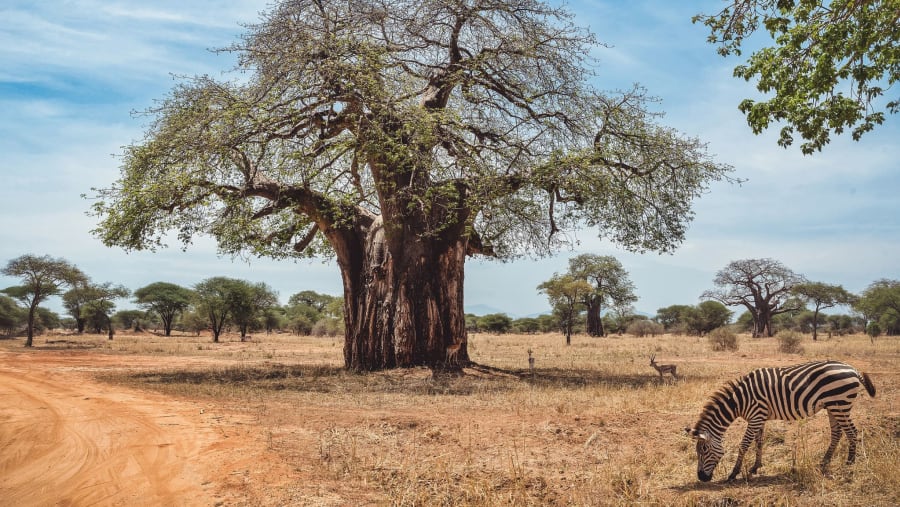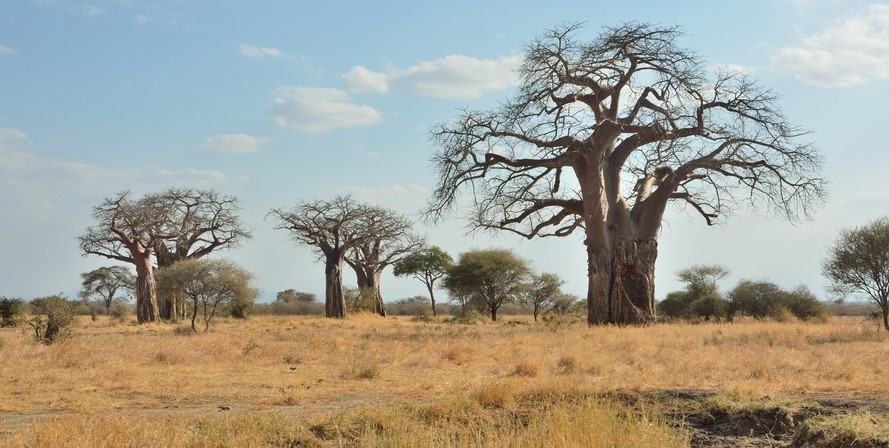Best Self Drive Guide to Tarangire National park
Tarangire National Park is one of the premier national parks in Tanzania, located in the Manyara region. This remarkable park encompasses an area of 2,850 square kilometers, serving as a vital conservation area and habitat for diverse biodiversity. Tarangire National Park is named after the Tarangire River, which traverses the park and serves as a prime location for wildlife, as several animals congregate at its banks to hydrate.
Two Days Safari in Tarangire and Ngorongoro National Park
Tarangire National Park features a captivating scenery characterized by woods, baobab trees, seasonal marshes, and acacia trees. The park is situated 118 kilometers south of Arusha town and is highly accessible.
Attractions in Tarangire National Park
Wildlife
Tarangire National Park is a prolific habitat for wildlife, boasting the largest concentration of fauna outside the Serengeti ecosystem. It is home to several iconic species in Tanzania, including three endemics: the fringe-eared oryx, the greater kudu, and the diminutive ashy starling. Tarangire National Park is renowned for harboring Tanzania’s largest elephant population, reaching 300 animals. These elephants are frequently observed in substantial herds along the arid bed of the Tarangire River, excavating in pursuit of water sources. Additional fauna in Tarangire National Park including wildebeests, antelopes, dwarf mongooses, gazelles, zebras, giraffes, buffalo, elands, hartebeests, and impalas. Most of these creatures migrate from adjacent protected areas to the park.
Bird species
Tarangire National Park is a remarkable sanctuary for an estimated 550 bird species, characterized by marshes and woods that support the biggest avian population in Tanzania. Bird species in Tarangire National Park encompass hoopoes, white-bellied helmeted guinea fowl, yellow-necked spurfowl, African grey flycatcher, and ashy starlings. Bare-faced go-away bird. Donaldson-Smith’s nightjar Pelecanus onocrotalus, Mouse-colored penduline tit, Northern pied babbler, Northern white-crowned shrike, ostrich, pink-breasted lark, rufous-tailed weaver, slate-colored boubou, Von der Decken’s hornbill. Vulturine Guinea Fowl, Yellow-collared lovebird. Alabaster countenance Whistling-Duck, Fulvous Whistling-Duck Greater Flamingo, Spotted Pigeon, Mourning Collared-Dove, Kori Bustard, White-bellied Bustard, Bare-faced Go-away-bird. White-browed Coucal, Klaas’s Cuckoo, Nyanza Swift, Little Swift, White-rumped Swift, African Swamp Hen, among others
Migration of wildebeest
In Tarangire, the most captivating spectacle is the migration of wildebeests, characterized by herds galloping in unison, accompanied by a thunderous sound. This phenomenon occurs annually from June to November. Wildebeest travel to the Tarangire region in pursuit of water, while the majority of protected areas surrounding Tarangire National Park become desiccated.
Wetlands
Tarangire is predominantly characterized by a network of marshes, which serve as water supplies inside the park and habitats for the majority of its fauna, making it an ideal location for wildlife observation. Swamps predominantly occupy the eastern and southern portions of Tarangire Park, serving as habitats for a substantial number of birds and animals, including elephants, Silale swamp lions, tree-climbing pythons, rare African wild dogs, Cape buffalo, and numerous others.
Baobab trees
Tarangire is characterized by the stunning historical baobab trees, sometimes referred to as the tree of life. These trees are among the longest-living on Earth, with lifespans reaching up to 600 years, and they serve as unique attractions inside the park due to their distinctive shape. The distinctive shape of these trees is attributed to their capacity to store significant amounts of water, about 300 to 1000 liters, within their swollen trunks and other structures. Numerous animals in Tarangire are observed on Baobab trees, as these trees serve as a food source and their bark is utilized by elephants to sharpen their tusks.

Baobab trees possess a captivating mythical narrative that renders them more intriguing and engaging to see in the park. According to the legends, these trees were formerly mobile beings that traversed the African landscape utilizing their roots until their mobility was halted by the Creator God. Due to God’s displeasure with the migrations of baobab trees, He resolved to plant them inverted in a single location, rendering them immobile as their roots would be positioned in the sky.
Kolo Rocks Art Site
The Kolo Rocks art site is an extraordinary ancient location located near Tarangire. The Kolo rock art site is a proposed UNESCO World Heritage site intended to showcase ancient rock formations to the public and visitors in Kenya. The site features rock objects left by ancient hunter-gatherers and prehistoric rock houses. Visiting this place provides an opportunity to experience the ancient lives of Tanzania’s early inhabitants.
Things to do In Tarangire National park
Safari excursion
A game drive in Tarangire National Park offers an exhilarating trip throughout the park’s picturesque plains, where a variety of animals may be readily observed through the roof and windows of your vehicle. The park offers several game drive sessions, including morning, full-day, afternoon, and night drives, which may be readily arranged at info@4x4carrentaltanzania.com.
During a game drive, one observes a diverse array of fauna, including herds of wildebeests, zebras, gazelles, lions, leopards, elephants, greater kudu, dik-dik, and hartebeests, readily encountered at the dry riverbed and various areas of the park. Tarangire National Park’s wildlife includes four of the five major species and showcases the remarkable wildebeest migration from June to November each year, providing an amazing and captivating spectacle that can be immortalized through stunning photographs.
Bird watching
Tarangire National Park is a sanctuary for avian enthusiasts, offering an exceptional birdwatching experience with over 550 bird species observable during game drives or nature walks within the park. Bird species observed in Tarangire National Park include hoopoes, white-bellied helmeted guinea fowl, yellow-necked spurfowl, African grey flycatcher, ashy starling, bare-faced go-away bird, Donaldson-Smith’s nightjar, great white pelican, mouse-coloured penduline tit, northern pied babbler, northern white-crowned shrike, ostrich, pink-breasted lark, rufous-tailed weaver, slate-coloured boubou, Von der Decken’s hornbill, vulturine guinea fowl, yellow-collared lovebird, among others.These birds are readily observed in habitats such as marshes located in the eastern and southern sections of the park, woodlands, and among acacia and baobab trees.
Guided Nature Walks
Guided nature walks in Tarangire offer an opportunity to traverse the plains of Tarangire National Park on foot, where participants can observe a variety of sights, including diverse wildlife, stunning gallery forests, and rich vegetation. Guided nature tours in the park last 1 to 2 hours.
Exploring the Kolo rock art location
The Kolo rock art site is a remarkable ancient location situated near Tarangire, providing an opportunity to observe the prehistoric existence of hunter-gatherers through the rock formations.Visits to cultural sites
Cultural excursions in Tarangire occur inside the Maasai communities located adjacent to Tarangire, where visitors are greeted by Maasai dance displays accompanied by harmonious indigenous melodies. You will observe the distinctive cultural practices of the Masai people, such as their traditional attire, dwellings constructed from indigenous materials, participation in cow herding, and interactions with the elders. The Masai are quintessential nomadic pastoralists, and numerous exquisite handcrafted artifacts are available for purchase as souvenirs.

Perfect time for a safari in Tarangire National Park
Tarangire National Park is an exceptional tourism attraction accessible to visitors year-round, including activities such as game drives and bird watching. The optimal season to visit Tarangire National Park is from August to October, during which the park experiences a high concentration of species and generally dry conditions. The optimal period for people seeking to observe the wildebeest migration in Tarangire is from June to December.
